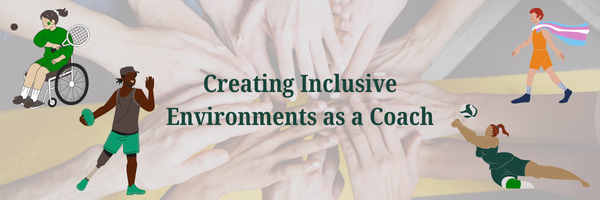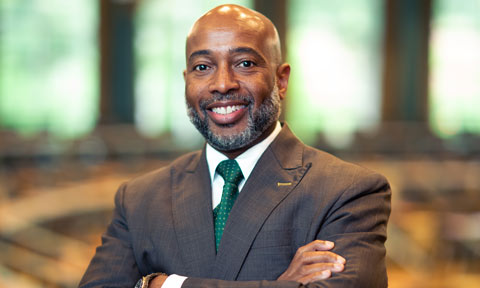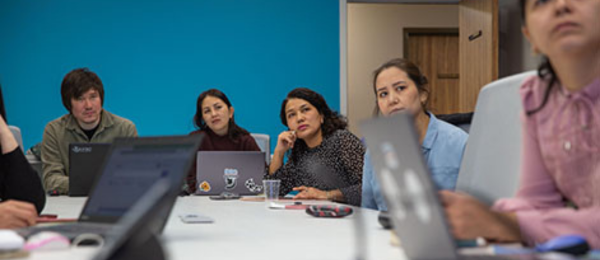
Sport for All?
As we know and is consistently discussed, there are many benefits of sport participation. These benefits include psychological benefits like increased self-esteem and mental toughness, social benefits like teamwork and leadership, and physical benefits such as strength and flexibility. However, the many benefits of sport participation are not automatically gained. Instead, they are related to how inclusive and accessible the environment is for the athletes involved.
For example, research has shown there are several physical, mental, and social benefits of physical activity and sport for disabled athletes.1 However, disabled individuals are 16–62% less likely to meet physical activity guidelines due to barriers such as lack of awareness on how to include them in sport, lack of opportunities for training and competition, inaccessible facilities, and negative stereotypes.2
Another example are transgender athletes who are deprived of the many benefits of sport participation due to their exclusion from competitive sport. Furthermore, they are less likely to participate in school sports due to the stigma against them. This is especially concerning as the transgender population has a higher incidence of mental health symptoms, high suicide rate, and a higher risk for violence victimization and substance use than cisgender peers.3 4
Why the Coach Matters
So, why does the coach matter when providing a space for all athletes to participate? First, the coach is the one who sets the climate for the team. Coaches hold a unique position of influence on team dynamics, making decisions about athlete selection, team objectives, locker room assignments, and player expectations, to name a few. These decisions influence athlete interactions and functioning of the team.5
The coach’s attitude toward athletes of different backgrounds will impact how teammates treat others. For example, sexual minority college athletes are two times more likely to experience harassment such as being excluded from team activities and homophobic language.6 If the coach engages in such activities or does not prohibit them on the team, harassment is more likely to occur resulting in negative outcomes for athletes who identify as LGBTQ.
Coaches have the opportunity to create a safe space for all athletes that is inclusive and supportive and make sure that any individual can gain the benefits that sport participation offers.
Inclusive Environments in Sport
In the research, inclusion consists of perceptions of belonging and authenticity. An athlete’s need to belong to a team depends on their feeling of being accepted and positively evaluated as a team member.7 Authenticity is determined by how much the athlete perceives they can feel and act in accordance with their true self. When an inclusive environment is established, athletes feel they can express their identities regardless of time and situation.8 When athletes feel a sense of belonging to the team and can also express their true identities, then the environment is perceived as inclusive.
7 Pillars of Inclusion
The 7 Pillars of Inclusion is a framework that provides sport programs and associations as a starting point to creating inclusive environments for athletes. The 7 Pillars were created by Play by the Rules, a group that aims to help sport stakeholders prevent and deal with discrimination, harassment, child safety, inclusion, and integrity issues in sport. To create the 7 Pillars, Play by the Rules conducted research with practitioners and policymakers to learn about common elements that contribute to inclusive environments that remain consistent in a range of contexts. Below you can read about each pillar and how it can be implemented.
- Access: Physical access to your program and accessible information about your program are important. For example, you can ensure ramps are available for participants using wheelchairs, signs are clearly visible for those with vision impairments. This pillar also focuses on creating an environment where all individuals feel welcome by showing acceptance and a willingness to cater to differences.
- Attitude: How willing are you and your program to embrace inclusion and diversity? Creating an inclusive environment can seem like a big task but often having a positive attitude and taking small steps can make a difference. For example, as a starting point, you can offer a certain event for a specific population and use this time to learn about their needs and interests.
- Choice: Providing athletes with a range of options provides them with higher quality experience in the sport. Choices can range from modifications to the sport like equipment, rules, and facilities or the choice of the type of uniform the athlete feels most comfortable in.
- Partnerships: Look for community partners to help you reach out to populations who may not be engaging in your organization. Having partnerships can provide you with the knowledge, resources, and information to help you reach your goal of becoming a more flexible and adaptive organization.
- Communication: Communication is critical to being inclusive. Think about the way you communicate. Do you use simple, direct language with your program stakeholders and avoid stereotypes? Do you allow parents and athletes to make suggestions regarding policies and practices? Are you transparent with parents when bullying or other issues arise?
- Opportunities: Provide athletes with more opportunities to feel a sense of belonging to your program. This can be done by using specific coaching strategies such as using appropriate language, using demonstrations/visual aids, using appropriate physical assistance, checking for understanding, and keeping instructions short and to the point.
- Policy: Unfortunately, policy is often not in our own hands. However, when possible, it is important for you to shape your program policies on issues such as racism, sexism, disability, etc. Have codes of conduct and expectations related to these issues that are consistently communicated with parents and athletes.
Other Coaching Strategies to Promote Inclusion
Thinking through each of the pillars listed can help you start to create inclusive environments for all athletes. While this task may seem challenging, there are also several strategies that a coach can use to get started:
- Understand the benefits of and be an advocate for inclusion and anti-discrimination and anti-bully laws for their team but also in the community.
- Confront prejudicial language by athletes, parents, other coaches, and administrators.
- Celebrate the sport accomplishments of all team members.
- Show your students that they are more alike than different by highlighting commonalities.
- Serve as a bridge to legal and mental health resources for athletes.
Moving Forward
As a coach, you can ensure all athletes gain the benefits of sport participation by creating an inclusive environment for all athletes in your program or on your team. Using the 7 Pillars of Inclusion can help you get started by thinking through how your program implements each pillar. By doing this, you can focus your strategies and efforts to provide a welcoming space for everyone. You can find more resources about the 7 Pillars and other related issues at the Play By the Rules website.9
About the Author

Dr. Jennifer Roth is an Associate Professor in the Department of Kinesiology. She teaches courses in the Sport Coaching, Leadership, and Administration online graduate programs. Her research interests include coach education, online teaching and learning, positive youth development through sport, and modified youth sports. She has consulted with the United States Tennis Association and has worked as a sport psychology consultant for numerous teams and athletes.
- Darcy, S., & Dowse, L. (2013). In search of a level playing field–the constraints and benefits of sport participation for people with intellectual disability. Disability & Society, 28(3), 393-407. ↩︎
- Ginis, K. A. M., van der Ploeg, H. P., Foster, C., Lai, B., McBride, C. B., Ng, K., … & Heath, G. W. (2021). Participation of people living with disabilities in physical activity: a global perspective. The Lancet, 398(10298), 443-455. ↩︎
- Hughes, L. D., Dowshen, N., Kidd, K. M., Operario, D., Renjilian, C., & Gamarel, K. E. (2022). Pediatric provider perspectives on laws and policies impacting sports participation for transgender youth. LGBT health, 9(4), 247-253. ↩︎
- Muchicko, M. M., Lepp, A., & Barkley, J. E. (2014). Peer victimization, social support and leisure-time physical activity in transgender and cisgender individuals. Leisure/Loisir, 38(3-4), 295-308. ↩︎
- Cumming, S. P., Smoll, F. L., Smith, R. E., & Grossbard, J. R. (2007). Is winning everything? The relative contributions of motivational climate and won-lost percentage in youth sports. Journal of applied sport psychology, 19(3), 322-336. ↩︎
- Turk, M. R., Stokowski, S. E., & Dittmore, S. W. (2019). “Don’t be open or tell anyone”: Inclusion of sexual minority college athletes. Journal of Issues in Intercollegiate Athletics, 12(1), 1. ↩︎
- Baumeister, R. F., & Leary, M. R. (2017). The need to belong: Desire for interpersonal attachments as a fundamental human motivation. Interpersonal development, 57-89. ↩︎
- Shore, L. M., Randel, A. E., Chung, B. G., Dean, M. A., Holcombe Ehrhart, K., & Singh, G. (2011). Inclusion and diversity in work groups: A review and model for future research. Journal of management, 37(4), 1262-1289. ↩︎
- Inclusion and diversity what can you do – Play by the Rules – Making Sport inclusive, safe and fair. (n.d.). https://www.playbytherules.net.au/got-an-issue/inclusion-and-diversity/inclusion-and-diversity-what-can-you-do ↩︎




